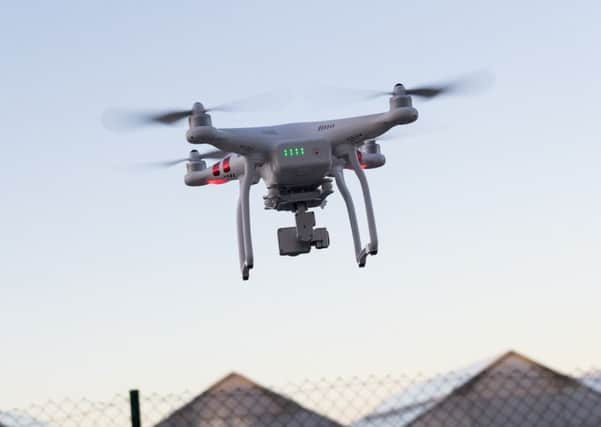COLUMN: Do's and don'ts of drone flying


No-one should want to stop people flying drones in a safe and legal way, possibly capturing that spectacular aerial shot or video but there are laws that govern the safe flying of drones and these are being broken by such flying.
Sadly a small group of fliers are putting public safety at risk by choosing to ignore the law or are ignorant of it.
Advertisement
Hide AdAdvertisement
Hide AdIn the right hands drones are good fun to fly and are able put a camera into positions that were traditionally impossible, giving the capability to provide some spectacular and unique imagery. Drones now available to the public can cost well over £1000, have sophisticated control and guidance systems on board, carry high resolution cameras and can stay airborne for over half an hour; weighing in excess of 1Kg and powered by batteries that can burst into flame if damaged. An out of control drone falling from 400ft poses a serious risk of injury, damage or fire on crashing.
Those flying drones can be put into two categories: the hobby or amateur flyer that has no formal qualification and the professional operator, who is qualified, has a CAA Permissions for Aerial Operations (PfCO) and appropriate drone insurance. Both are governed by the same law but with two distinct differences within it: commercial gain and congested areas. Firstly, a hobby flyer cannot make money in any way from flying a drone. Secondly, within a congested area (city, town, village, public parks etc.) they have to maintain a minimum separation distance, when flying, of 150 metres from people, property, buildings, vehicles and structures not under their control i.e. they have not asked for or been given permission. As the legal maximum height that can be flown by a drone is 121m it is almost impossible to for a hobby drone flier to fly in the centre of Chesterfield. A PfCO operator has that distance reduced to 50m separation, making it possible, but will need to ensure that permissions are obtained (starting with the council), secure take-off and landing areas are cordoned off, there is safety marshalling and so on.
The concern is that publishing photographs taken by these ‘hobby’ drone fliers could be seen as legitimising illegal drone flying, giving a ‘green light’ to anyone taking a drone and flying it around Chesterfield. As a result it is not hard to envisage a scenario where some people now feel free to fly their drones risking hitting the wheel while attempting that ‘spectacular’ shot or even colliding with another drone. A drone dropping on to crowds below could inflict serious injury or worse.
Flying at night, although not illegal does present extra challenges and risk.
Advertisement
Hide AdAdvertisement
Hide AdAnyone new to drone flying will soon realise that what you can or cannot do appears quite complicated at first.
The following sites can be visited to get the information you need:
Derbyshire Police - www.derbyshire.police.uk/Safety-advice/Your-Home-and-Business/Drones-Your-responsibility/Drones-Your-Responsibilities.aspx
UK Civil Aviation - www.caa.co.uk/Commercial-industry/Aircraft/Unmanned-aircraft/Small-drones/Regulations-relating-to-the-commercial-use-of-small-drones/
Advertisement
Hide AdAdvertisement
Hide AdDrone Safe web site including the Drone Code http://dronesafe.uk/
Derbyshire Drone Fliers Support Group on Facebook - www.facebook.com/groups/derbyshiredrones/
l Peter Smith is director of Sky Eye Concepts Ltd